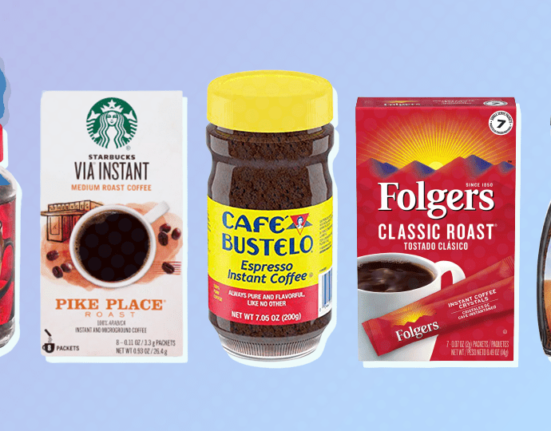Meal planning isn’t just for health nuts or busy parents—it’s a life hack everyone can benefit from. Whether you’re juggling work, family, or just trying to eat healthier, mastering the art of meal planning can save you time, money, and stress. It’s a game-changer in the kitchen, turning the daily question of “What’s for dinner?” into a well-orchestrated routine. Let’s dive into the art of meal planning and learn how to make it work for you.
1. Why Meal Planning?
First, let’s address the elephant in the room: Why bother with meal planning? The benefits are plentiful and go beyond just saving time.
Save Money
By planning your meals, you can make a detailed grocery list and avoid impulse buys. You’ll also reduce food waste by only purchasing what you need. According to the USDA, the average American family throws away approximately $1,500 worth of food annually (USDA, 2021).
Eat Healthier
When you plan meals, you’re more likely to choose nutritious options. You control the ingredients, portions, and cooking methods, making it easier to stick to dietary goals or preferences.
Reduce Stress
No more last-minute scrambles to figure out dinner. With a plan in place, you’ll know exactly what’s for dinner each night, making evenings less chaotic.
2. Getting Started with Meal Planning
Starting might feel overwhelming, but it’s easier than you think. Here’s how to simplify the process.
Set Your Goals
Are you planning to save money, eat healthier, or reduce stress? Knowing your goals will guide your choices and make planning more focused.
Assess Your Schedule
Consider your weekly commitments. Which nights do you need quick meals? When can you spend more time cooking? This will help you decide which recipes to select.
Stock Up on Essentials
Having a well-stocked pantry with staples like rice, pasta, canned goods, and spices can make meal planning smoother. You’ll need fewer fresh ingredients each week, saving time and money.
3. Building Your Meal Plan
Now that you’re ready, let’s build that meal plan.
Choose Your Recipes
Select recipes that fit your goals and schedule. Aim for a balance of proteins, carbs, and vegetables. Websites like AllRecipes or apps like Yummly are fantastic for finding meal ideas that match your dietary preferences.
Batch Cooking and Leftovers
Cooking in batches can be a lifesaver. Prepare larger portions and store leftovers for later in the week. This works great for soups, casseroles, and grains like rice or quinoa.
Mix It Up
Variety is key to avoiding food fatigue. Rotate cuisines, cooking methods, and flavors to keep things interesting. One day could be Mexican tacos, the next an Italian pasta dish.
Include Quick and Easy Meals
For busy nights, plan simple meals like stir-frys, salads, or sandwiches. These can be whipped up in minutes but are still satisfying and healthy.
4. Shopping Smart
Once your meal plan is ready, it’s time to hit the grocery store.
Make a List
A well-organized shopping list is your best friend. Group items by category (produce, dairy, meats) to make shopping efficient. Apps like AnyList can help streamline this process.
Shop Seasonal and Local
Buying seasonal produce isn’t just good for your wallet—it’s good for the planet too. Seasonal foods are often fresher, cheaper, and more flavorful.
Don’t Shop Hungry
We’ve all been there—shopping while hungry can lead to impulse buys that derail your plan. Eat before you shop to stay focused on your list.
5. Meal Prep Like a Pro
With your ingredients ready, meal prep can make your week go even smoother.
Pre-Cut and Pre-Cook
Chop vegetables, cook grains, and even portion out snacks ahead of time. This will save you valuable minutes during the week.
Use Storage Wisely
Invest in good-quality storage containers to keep prepped food fresh. Glass containers are great because they’re microwave-safe and don’t retain odors.
Label and Organize
Label your containers with the meal name and date to keep track of freshness. Organize your fridge so that prepped items are easily accessible.
6. Tips for Staying Consistent
Consistency is the secret sauce to successful meal planning.
Start Small
Begin by planning just a few meals a week. As you get more comfortable, you can expand to planning every meal.
Be Flexible
Life happens—plans change. If you need to swap a meal or skip a day, that’s okay. The key is to adapt and keep going.
Review and Reflect
At the end of each week, review what worked and what didn’t. Did you enjoy the meals? Were they too time-consuming? Use these insights to refine your plan.
7. Advanced Meal Planning Tips
Ready to level up? Here are some advanced tips.
Incorporate Theme Nights
Taco Tuesday, Pasta Thursday—theme nights can simplify planning and add fun to your meals.
Plan for Snacks
Don’t forget about snacks. Planning healthy snacks like fruit, nuts, or yogurt can keep your energy up and reduce unhealthy cravings.
Utilize Technology
Apps like Mealime or Plan to Eat can help you create and organize meal plans digitally, making the process even more efficient.
Conclusion
Mastering the art of meal planning takes a bit of effort up front, but the rewards are well worth it. From saving money and time to improving your health, meal planning can transform your relationship with food. Remember, it’s not about perfection—it’s about creating a system that works for you and makes your life easier.
So grab a notebook, open your favorite recipe app, and start planning your next week of delicious, stress-free meals!
References:
- USDA. (2021). Food Waste FAQs. United States Department of Agriculture.
By embracing meal planning, you’re taking control of your kitchen, your budget, and your health. Happy planning!








Leave feedback about this